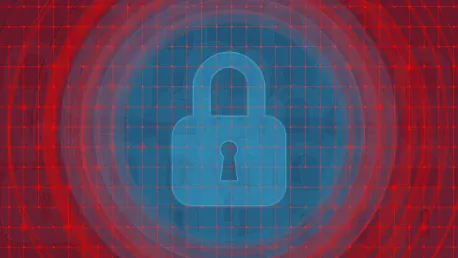In the current digital age, organizations are increasingly turning to artificial intelligence (AI) and automation to bolster their cybersecurity measures. This trend is driven by the need to address the growing and complex array of cyber threats. As the volume and sophistication of cyber-attacks continue to escalate, the pressure on cybersecurity teams to manage and protect vast amounts of data becomes overwhelming. Leading experts in the field highlight the advantages and challenges associated with these advanced technologies, underscoring their crucial role in modern cybersecurity practices.
The Role of AI in Data Processing
Artificial intelligence has emerged as a critical tool in managing the immense volumes of data generated by cybersecurity systems. Generative AI, for instance, offers enhanced capabilities for interpreting this data more naturally and efficiently than traditional methods. Daniel dos Santos from Forescout’s Vedere Lab emphasizes how generative AI assists in categorizing malware variants and identifying anomalies. This innovation enables security teams to focus their efforts on significant threats rather than sifting through vast amounts of data, which can often lead to fatigue and oversight.
Additionally, machine learning models further support these tools by categorizing and detecting threats. These models are trained on large datasets to recognize patterns and anomalies that may indicate potential security breaches. By leveraging the powerful combination of generative AI and machine learning, cybersecurity systems can streamline the entire threat detection and response process. AI’s ability to process vast amounts of data helps simplify the extensive data from firewalls, network monitors, and other security tools. This transformation of raw data into actionable insights empowers analysts to concentrate on issues that truly matter, thereby enhancing the overall effectiveness of cybersecurity measures.
Efficiency and Effectiveness of Automation
Automation in cybersecurity extends beyond mere data management; it plays a vital role in managing the deluge of data generated by various security measures and systems. This technological advancement significantly enhances the efficiency of cybersecurity efforts. AI-driven tools prioritize security risks, easing the burden on SOC engineers who otherwise might be overwhelmed by the sheer number of alerts. By effectively filtering and flagging high-priority threats, these tools enable a more focused and effective response to potential security incidents.
The synergy between AI and human analysts is particularly noteworthy. While AI offers precision and speed, human professionals provide the nuanced understanding and decision-making capabilities that machines lack. This balance is crucial for a robust cybersecurity framework, where AI can handle the heavy lifting of data processing and initial threat detection, leaving humans to undertake more complex and strategic tasks. Furthermore, AI-driven automation allows for continuous monitoring and protection against cyber threats, which is essential in a landscape where attacks can occur at any time, often without warning. By maintaining a state of constant vigilance through automation, organizations can reduce their response times and mitigate potential damages from cyber incidents.
The Importance of Human Oversight
Despite the advancements in AI and automation, human intuition and oversight remain indispensable in cybersecurity. Juraj Malcho from ESET underscores the necessity for manual moderation, noting that humans must purify and correct datasets for AI training. This human oversight ensures that the data used to train AI models is accurate and relevant, which is essential for effective threat detection and response.
Cybersecurity is not a domain where machines can operate autonomously. Human professionals play a pivotal role in validating and acting upon the insights generated by AI. Daniel dos Santos and Juraj Malcho both stress that final decisions and threat responses must involve human judgment. This human element is crucial in addressing the nuanced and complex nature of cyber threats, which often require a deep understanding of context and intent that AI alone cannot provide.
Moreover, the concern of skill erosion due to over-reliance on AI is addressed by the industry’s need for a skilled workforce. The scale of cyber threats continues to expand, necessitating human expertise to manage the growing attack surface effectively. Continuous training and skill development are essential to ensure that cybersecurity professionals remain adept at managing both traditional and AI-enhanced methods. This ongoing education helps bridge the gap between human intuition and machine precision, fostering a more resilient defense system.
Risks and Challenges of AI and Automation
While AI and automation offer significant benefits in cybersecurity, they are not without risks. One notable incident involved an update from CrowdStrike that led to a global outage, illustrating the potential for misfires with automated systems. This incident underscores the importance of rigorous testing and gradual rollout of updates to avoid widespread disruptions.
Daniel dos Santos and Juraj Malcho advocate for stringent testing protocols to mitigate such risks. Rigorous scrutiny and gradual rollout of updates are essential to avoid disruptions and ensure consistent cybersecurity measures. The issue of accountability is also vital. There’s a growing call for higher accountability standards for software vendors to ensure they adhere to robust security practices. This approach aims to reduce incidents caused by faulty updates and enforce responsibility for maintaining safe products.
The potential for automated systems to make mistakes or be exploited by malicious actors highlights the need for ongoing vigilance and oversight. Cybersecurity teams must remain proactive in monitoring and assessing the performance of AI and automation tools, ensuring that they operate as intended and do not introduce new vulnerabilities. This proactive approach helps organizations stay ahead of potential threats and maintain a robust security posture.
Trends in AI and Automation Adoption
The adoption of AI and automation in cybersecurity is on the rise, driven by the necessity to handle an overwhelming amount of data and threats. Organizations are increasingly integrating these technologies into their broader cybersecurity strategies. The collaboration of AI tools with human professionals exemplifies the evolving landscape of cybersecurity. Continuous training and skill development are crucial to maintain a workforce adept at managing AI-generated data and emerging threats.
Investments in training programs ensure that security personnel remain proficient in both traditional and AI-enhanced cybersecurity methods. This ongoing education helps bridge the gap between human intuition and machine precision, fostering a more resilient defense system. As AI and automation continue to evolve, organizations must remain committed to investing in their workforce, ensuring that they have the necessary skills and knowledge to leverage these technologies effectively.
The integration of AI and automation with human expertise represents the future of cybersecurity. By combining the strengths of both human intuition and machine precision, organizations can create a comprehensive defense system capable of addressing the increasingly sophisticated cyber threats. This balanced approach not only enhances the effectiveness of cybersecurity measures but also ensures that organizations remain adaptable and resilient in the face of evolving threats.
Ensuring a Balanced Approach
While AI and automation are transformative, a balanced approach is essential. These technologies should augment, not replace, human capabilities. This balance ensures that cybersecurity measures are both efficient and adaptable to evolving threats. Organizations are encouraged to adopt rigorous testing and deployment protocols for new software and updates. This strategy helps mitigate the risks of widespread outages and maintains the integrity of cybersecurity infrastructures.
Investing in continuous education for security professionals is another key recommendation. Ongoing training ensures that personnel are equipped to handle the complexities of AI tools and the dynamic nature of cyber threats. Increasing accountability measures for software vendors also fosters a secure and reliable cybersecurity environment. The integration of AI and automation with human expertise will continue to shape the future of cybersecurity, providing a comprehensive defense against increasingly sophisticated cyber threats.
By adopting a balanced approach that leverages both technological advancements and human expertise, organizations can create a resilient cybersecurity framework. This approach not only enhances the efficiency and effectiveness of cybersecurity measures but also ensures that they remain adaptable to the ever-changing threat landscape. As AI and automation technologies continue to evolve, organizations must remain committed to investing in their workforce and maintaining rigorous testing and accountability standards, ensuring a comprehensive and robust defense system against cyber threats.
Conclusion
In today’s digital age, organizations are increasingly adopting artificial intelligence (AI) and automation to enhance their cybersecurity measures. This shift is fueled by the pressing need to tackle the ever-growing and increasingly complex landscape of cyber threats. As the number and sophistication of cyber-attacks rise, the burden on cybersecurity teams to safeguard massive amounts of data becomes more daunting. Leading experts in the field emphasize both the benefits and challenges of these advanced technologies, highlighting their indispensable role in contemporary cybersecurity strategies.
AI and automation help in identifying potential threats more quickly and accurately than traditional methods. They can sift through enormous datasets to recognize patterns and anomalies that might indicate a cyber-attack. However, the integration of these technologies is not without challenges. Implementing AI and automation requires significant resources, including financial investment, technical expertise, and ongoing maintenance.
Moreover, there’s a continuous need to update AI algorithms to cope with the evolving nature of cyber threats. Despite these challenges, the potential rewards are substantial. AI and automation offer increased efficiency, allowing cybersecurity teams to focus on more complex tasks that require human intervention. Thus, while the road to fully integrating these technologies may be challenging, their role in fortifying cybersecurity frameworks cannot be overstated.









